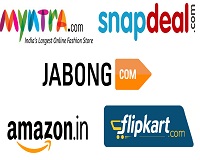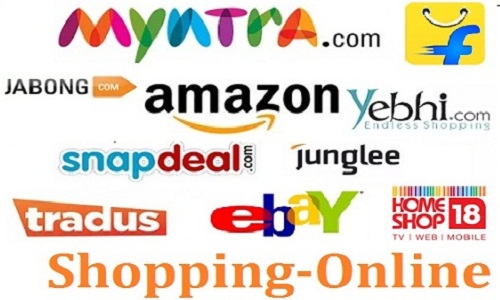"The Hong Kong Trade Development Council has published a research on India’s growing e-commerce consumerism. As per the report, India is considered a difficult market to do business, despite substantial improvement in the ease of doing business in recent years. In the World Bank’s Doing Business 2018 report, India jumped up 30 places from the year ago in international rankings measuring the ease of doing business, making it into the top 100 for the first time."
 The Hong Kong Trade Development Council has published a research on India’s growing e-commerce consumerism. As per the report, India is considered a difficult market to do business, despite substantial improvement in the ease of doing business in recent years. In the World Bank’s Doing Business 2018 report, India jumped up 30 places from the year ago in international rankings measuring the ease of doing business, making it into the top 100 for the first time.
The Hong Kong Trade Development Council has published a research on India’s growing e-commerce consumerism. As per the report, India is considered a difficult market to do business, despite substantial improvement in the ease of doing business in recent years. In the World Bank’s Doing Business 2018 report, India jumped up 30 places from the year ago in international rankings measuring the ease of doing business, making it into the top 100 for the first time.
India’s growing e-com strength
From a much lower and later starting point than China, India has staged a sustained e-commerce boom. At the same time, the government has cautiously opened up retail and e-commerce sectors to FDI. Given these factors, and notwithstanding the existing retail FDI restrictions and entry barriers, India presents plenty of business opportunities to Hong Kong companies that are prepared to tap into the country’s booming e-commerce market, by jumping on the online sales bandwagon and/or leveraging the online platforms that are emerging there.
same time, the government has cautiously opened up retail and e-commerce sectors to FDI. Given these factors, and notwithstanding the existing retail FDI restrictions and entry barriers, India presents plenty of business opportunities to Hong Kong companies that are prepared to tap into the country’s booming e-commerce market, by jumping on the online sales bandwagon and/or leveraging the online platforms that are emerging there.
While India’s e-commerce sales was only $30 billion in 2017 – just 6.7 per cent of China’s total and 11.2 per cent of that of the US – the country’s e-tailing market growth is expected to outstrip both China and the US in the next five years. China is the world’s largest e-commerce market, its growth boosted by a fast improving broadband infrastructure, increasingly affordable mobile devices, and a myriad of innovative services linked particularly to smartphone applications. The average annual growth rate of China’s e-commerce market for 2012-17 was 46.2 per cent. While such growth was truly remarkable, it actually fell short of India’s average annual growth of 59 per cent in the same period. From 2017-22, the difference in average annual growth rates is likely to continue to move in India’s favour, with China’s e-commerce sales expected to expand annually by 12 per cent, only half of the growth forecast for India’s.
While India’s population is a similar in size to China, its 2017 per capita income of $1,852 was less than one-quarter of China’s, according to the IMF. The differences between the two countries in terms of e-commerce development and purchasing power mean that the per capita e-commerce spend in India is much lower than in China, amounting to $23 in 2017 (just 7per cent of China’s figure). The ratio of per capita spend in India to that of China, however, is expected to improve slightly to more than 11per cent by 2022. Despite the e-commerce euphoria of the past few years and the market growth expected in the next few, Indian consumers will continue to be extremely price-sensitive. Whether purchasing online or elsewhere, the majority of them may not be able or willing to afford pricier, imported international lifestyle brands and high-end products, particularly products boasting top-of-the-range features and functionalities.
Cross-border e-com opportunities for Hong Kong
Hong Kong companies eyeing India’s retail market potential, particularly that of the super-charged e-commerce segment, should have a clear understanding of how cross- border e-commerce could be adopted in practice. Any FDI-invested SBRT operation in India is subject to a 30 per cent local sourcing requirement, but also has the added option of operating an associated single-brand B2C website. However, any foreign company failing to register in India and/or source locally will not be permitted to operate a single brand B2C e-commerce website in the country.
Indian consumers browse and shop from overseas or non-Indian B2C e-commerce websites, and it may be practically difficult to require those non-Indian websites to observe the 30 per cent local sourcing requirement. However, overseas B2C websites that are committed to selling to India need to effectively reach out to Indian consumers with marketing campaigns and promotional activity, and they will be better off staying close to the market with their local SBRT setup. Hong Kong companies keen to sell to India via a local presence may find it a practical step in making contact with Indian consumers.
Successful e-commerce operators have adopted both online and offline marketing initiatives to boost online sales. It is difficult to orchestrate an overall sales and marketing strategy without securing a local business identity in India, and a further difficulty to overcome is the local sourcing requirements imposed by the regulatory authorities. That said, Hong Kong companies interested in selling to India may be able to identify a third party in India with a registered business entity to help facilitate selling, in order to avoid incurring heavy capital commitment upfront.












